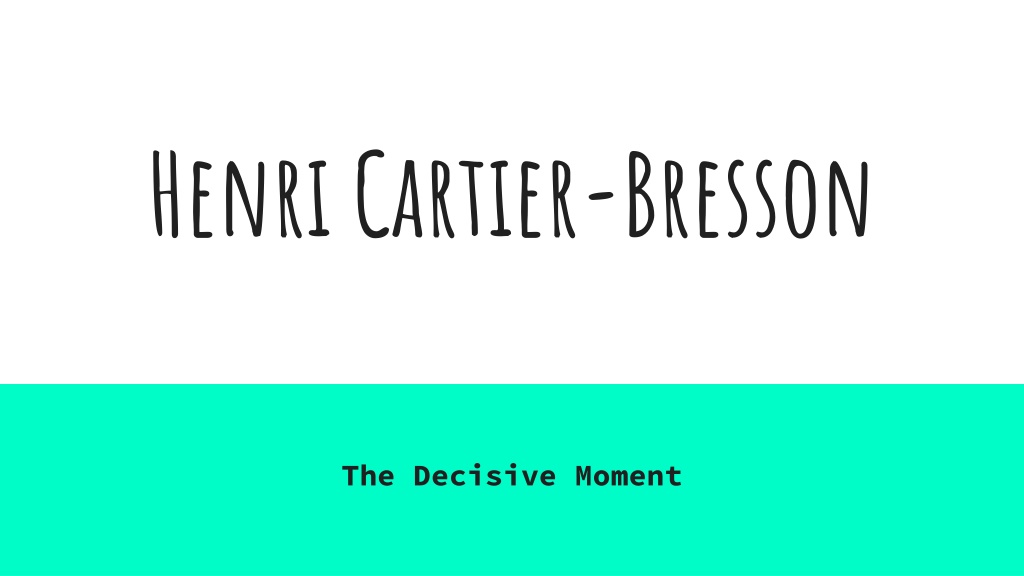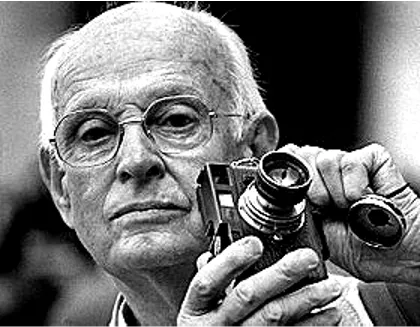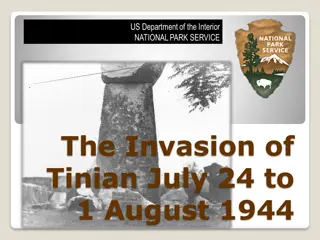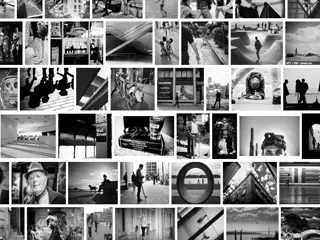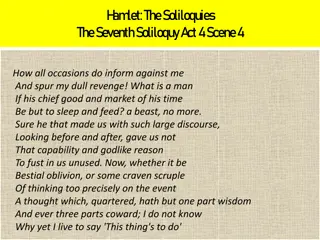Henri Cartier-Bresson: Master of The Decisive Moment
Henri Cartier-Bresson, a renowned French photographer, is celebrated for his pioneering work in street photography and capturing the essence of significant moments. From co-founding Magnum to documenting Gandhi's funeral and the Chinese Civil War, his images reflect humanity's pulse. His iconic publication "The Decisive Moment" encapsulates his philosophy of capturing the essence and significance of fleeting events in a fraction of a second. Explore the life and impact of this influential artist.
Download Presentation

Please find below an Image/Link to download the presentation.
The content on the website is provided AS IS for your information and personal use only. It may not be sold, licensed, or shared on other websites without obtaining consent from the author.If you encounter any issues during the download, it is possible that the publisher has removed the file from their server.
You are allowed to download the files provided on this website for personal or commercial use, subject to the condition that they are used lawfully. All files are the property of their respective owners.
The content on the website is provided AS IS for your information and personal use only. It may not be sold, licensed, or shared on other websites without obtaining consent from the author.
E N D
Presentation Transcript
Henri Cartier-Bresson The Decisive Moment
Bio b. 1908 d. 2004 Nationality: French As a child, used a Box Brownie camera Early user of 35mm film Pioneered work in the genre of street photography
Bio Continued Went to Cote D Ivoire, French colonial Africa Developed deep relationship with the Surrealists Shot on a Leica, primarily First published photojournalistic work was his coverage of the coronation of King George VI and Queen Elizabeth Served in WWII, spent time in a prisoner of war camp doing forced labor under Nazi direction. Escaped the camp, dug up his Leica, which he had buried before capture
Magnum, 1947 Along with Robert Capa, David Seymour, William Vandivert, and George Rodger founded Magnum. The first cooperative photo agency owned by its own members. Rodger, who had quit Life, would cover Africa and the Middle East. Seymour (Chim) would work in Europe. Cartier-Bresson would cover India and China. Vandivert would work in America. Capa would work anywhere on assignment. There was a Paris office and a NYC office.
Gandhi/Chinese Civil War Cartier-Bresson rose to international prominence with his coverage of Gandhi s funeral in 1948 and the Chinese Civil War in 1949 Magnum s mission was to feel the pulse of the times, with an emphasis on photography in the service of humanity
The Decisive Moment Images la sauvette Published 1952 Cover by Henri Matisse 126 images Epigraph: "Il n'y a rien dans ce monde qui n'ait un moment decisif." (Cardinal de Retz, 17th cen.) "There is nothing in this world that does not have a decisive moment."
The Decisive Moment, cont "To me, photography is the simultaneous recognition, in a fraction of a second, of the significance of an event as well as of a precise organization of forms which give that event its proper expression."
Later life/overview Cartier-Bresson withdrew as a principal of Magnum in 1966. He then focused on portraiture and landscapes. Cartier-Bresson spent over thirty years on assignment for Life/other journals. He traveled extensively, documenting the historic upheavals of the 20th century, e.g., the Spanish civil war, the liberation of Paris (1944), the student rebellion in Paris (1968), the fall of the Kuomintang in China to the communists (1949), the assassination of Mahatma Gandhi (1948), the construction of the Berlin Wall (1962).
Paris student rebellion, 1968
Later Life/Overview Cont He did portraits for Camus, Picasso, Colette, Matisse, Pound and GIacometti. One of his most renowned photographs, Behind the Gare St. Lazare, depicts a seemingly unimportant moment of ordinary daily life.
Themes/Aesthetic styles that Pervade Cartier-Bresson s work...
Behind the Gare St. Lazare 1932 1.Always look/wait for the Decisive Moment
2. A painterly eye France, Sunday, on the Banks of the Seine, 1938
Compare with, for instance: Luncheon of the Boating Party. 1881, Renoir
Hyres, France, 1932 For me, content cannot be separated from form. By form, I mean a rigorous geometrical organization of interplay of surfaces, lines and values. 3. An emphasis on geometry
4. Children as subjects
Other aspects of Cartier-Bressons Photographic Style... 1. He shot primarily with a 50mm lens 2. No cropping 3. No processing 4. Black and white, with attention to shadows
Bibliography American Federation of Arts, et al. In Our Time: The World as Seen by Magnum Photographers. New York: W. W. Norton, 1989. Boot, Chris. Magnum Stories. New York: Phaidon, 2014. Cartier-Bresson, Henri. The Decisive Moment. Gottingen: Steidl, 2015. Galassi, Peter. Henri Cartier-Bresson: The Modern Century. New York: Museum of Modern Art, 2010. Kim, Eric. Ten Things Henri Cartier-Bresson Can Teach You about Street Photography. <http://erickimphotography.com/blog/2011/08/22/10-things-henri-cartier-bresson-can-teach-you-about-street- photography/> Lubben, Kristen. Magnum Contact Sheets. New York: Thames and Hudson, 2014. Miller, Russell. Magnum: Fifty Years at the Front Lines of History. New York: Grove Press, 1999.
